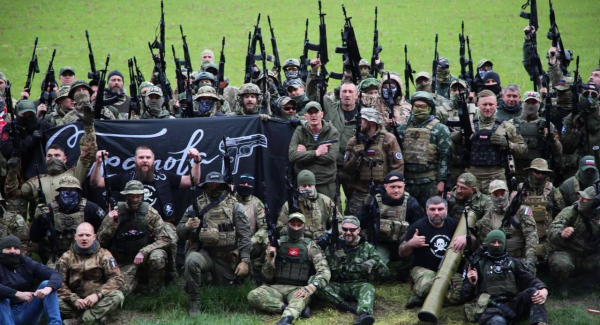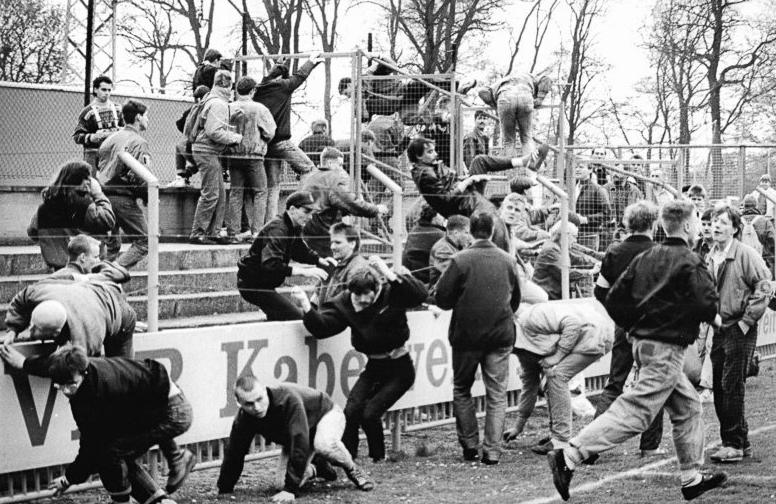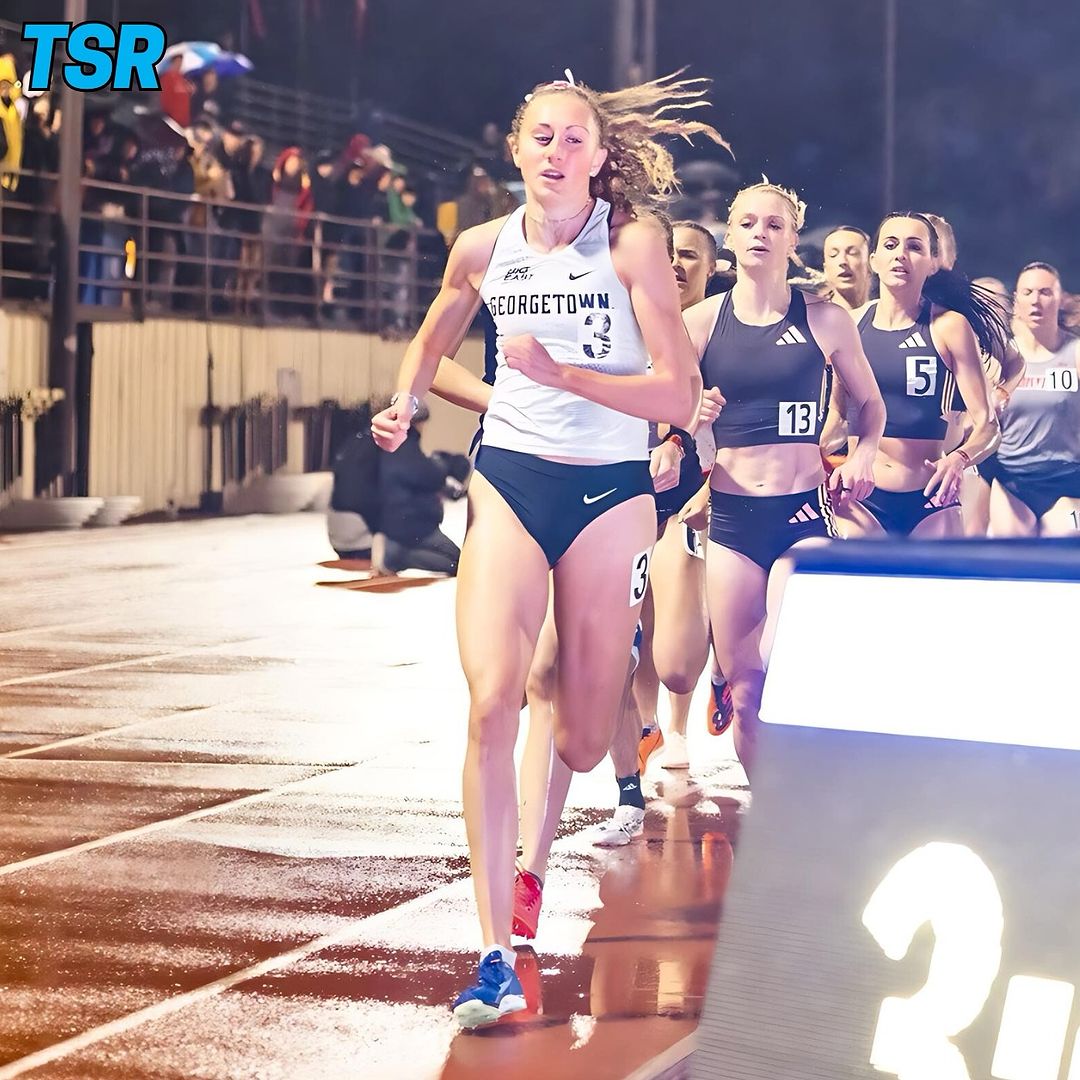noun, BRITISH
- A violent troublemaker whose behavior is associated with or motivated by their support of a soccer team.
The groups of young men — known as firms — who brawled in town squares and on terraces, fueled by concoctions of cheap alcohol and various narcotics, donned Stone Island tracksuits and Adidas sambas and chanted as they departed trains up and down the country, defined a dark era of British football fandom from the 1960s to the 1980s.
A source of bemusement for some — and the bane of others’ existence — this notorious British mid-20th-century subculture has left its mark everywhere.
But very few would call football hooligans “inspiring.”
Russia’s hooligan scene first appeared after the collapse of the Soviet Union, taking certain cues from their British counterparts, whilst simultaneously developing their own culture. Due to more intense security around football, fans who wanted to fight had to look further afield to satiate their need for bloodshed. Away from the stadiums, away from the public, away from the police.
Groups of fans would meet in fields, forests and farms to fight, clapping when running at each other to show they were not armed. This dystopian fight-club-esque secret society still operates and thrives today all over Europe, particularly in the East.
Gone are the days of football fans as “the fatty manifestation of gallons and gallons of lager and incalculable quantities of bacon-flavored crisps,” as Bill Buford described them in 1990 in “Among the Thugs,” the defining book on football hooligans. Russian fans have traded pints for punching bags, with these new firms often training six days a week to prepare for their fights.
There can also be unintended consequences of having highly trained young men who are willing and excited to fight week-in and week-out.
In 2014, thousands of hooligans backed protestors in Ukraine who wanted to remove former Ukrainian President Viktor Yanukovych from power, playing an important role in street-level skirmishes. Since then, informal battalions of football hooligans have formed on both sides of the Russo-Ukrainian War and have been incorporated into each country’s formal military structure.
The most infamous of these is the Española.

What started as a volunteer paramilitary unit in the self-proclaimed pro-Moscow territory of eastern Ukraine has become a personal paramilitary of Putin’s United Russia party. The group operates independently outside of any official battalion or division, and the roughly 600-strong unit is largely composed of far-right Russian football hooligans.
Named after their leader Stanislav “Spaniard” Orlov, a former member of the Russian professional team CSKA — Moscow’s firm — the unit is comprised of hooligans from firms at CSKA, Zenit Saint Petersburg, Spartak Moscow, Torpedo Moscow, Lokomotiv Moscow and other teams. This includes the Orel Butchers, a particularly violent group that was a major contributor to the vicious planned attacks against English fans at the UEFA Euro 2016, which left 14 opposition fans hospitalized, two in a coma and one with his Achilles tendons sliced.
One Russian hooligan later told a French news agency, “The English always say they are the main football hooligans; we went to show that the English are girls.”
These Russian firms were a far cry from the obese Englishmen who tripped over their own feet trying to clobber their opposing number. In post-Soviet Union Russia, “hooliganism” provided disenfranchised young men with a chance to bolster their nationalism and create a new identity.
But the Kremlin was conscious that these violent men could throw Russia, which was due to host the 2018 World Cup at the time, into disrepute. Aside from violence, the firms were also viewed as machines for recruiting and radicalizing young men to the far right, which has planted racist ideologies at the center of the country’s football culture.
And so the football hooligans were cast to the wayside. Until Russia invaded Ukraine.
Española now has its own training ground where recruits are taught to shoot, defuse explosives, fire grenade launchers and operate drones and missile defense systems.
Orlov, the leader of the group, stated — while stroking his group’s lion cub mascot Kia, no less — “Everything we have bought is with fans’ money. We don’t get any money from the state, or from oligarchs. Although we’d like to have the support of footballers.”
On the Ukrainian side, there are similar battalions.
The Azov Assault Brigade, which fought in 2014, has since been incorporated into Ukraine’s military and is famous for its last-stand defense of a now-fallen steel plant in Mariupol. Other groups include Ukraine’s only anti-fascist hooligan firm, the Kayfariki group, which has been fighting since the start of the war as a unit in Ukraine’s territorial defense forces, the country’s volunteer military reserve.
The Russo-Ukrainian War has enveloped a region with its futile violence, and certain groups — notably the football hooligans — have thrived in the chaos of the front lines.








